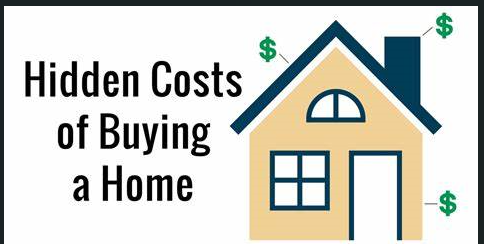When you’re budgeting for a new home, it’s natural to focus on the big-ticket items—like the down payment and monthly mortgage. But there are several hidden costs that can catch first-time homebuyers off guard. Being aware of these expenses upfront can help you avoid surprises and set a realistic budget, so let’s dive into the costs you shouldn’t overlook.
- Closing Costs
Closing costs are fees that come due at the end of your home purchase, often totaling 2% to 5% of the home’s purchase price. These costs can include lender fees, appraisal fees, title insurance, and attorney fees (depending on the state). While some lenders allow you to roll these costs into your mortgage, paying them upfront can save you money on interest in the long run. Be sure to ask your lender for an estimate early in the process so you can plan accordingly.
- Home Inspection Fees
A home inspection is essential to make sure there aren’t any hidden issues with the property, from plumbing leaks to foundation cracks. Inspections typically cost a few hundred dollars, but they can save you from unexpected repairs down the road. Keep in mind that if your inspection reveals serious issues, you may choose to walk away from the deal—or negotiate with the seller to fix the problems before closing.
- Property Taxes
Property taxes are an ongoing expense that varies widely based on your home’s location, size, and assessed value. Many lenders will include property taxes in your monthly mortgage payment, setting aside the amount in an escrow account. However, if your home’s assessed value increases, your tax bill may go up as well. Be prepared for possible fluctuations and consider asking about the tax history for homes in your area before you buy.
- Homeowners Insurance
Homeowners insurance is essential for protecting your property, covering everything from fire damage to liability. Premiums can vary based on factors like your location, home size, and coverage level. On average, homeowners insurance costs range from $1,000 to $3,000 per year, but it could be higher if you live in an area prone to natural disasters. Shop around and compare rates to get the best deal.
- Private Mortgage Insurance (PMI)
If your down payment is less than 20%, you may need to pay for private mortgage insurance (PMI). This monthly expense can add up, costing anywhere from 0.5% to 1% of your loan amount per year. Remember, once your home equity reaches 20%, you can request PMI removal, potentially reducing your monthly payment. It’s a hidden cost to factor in but also one that could eventually go away.
- Moving Costs
Moving into your new home comes with its own set of costs, whether you’re hiring professional movers or renting a truck to move yourself. Costs can vary based on the distance and the amount of furniture and belongings you have. Be sure to factor in the expense of boxes, packing supplies, and any necessary cleaning for your previous residence as well.
- Utility Setup Fees
Starting services like electricity, gas, internet, and water at a new home often comes with setup fees. These costs can range from $50 to $200 per service, depending on the provider and location. If you’re moving from an apartment to a larger home, be prepared for potentially higher monthly utility bills as well.
- Homeowners Association (HOA) Fees
If you’re buying a home within a community governed by a homeowners association, you may need to pay HOA fees. These can vary from a few hundred dollars to several thousand dollars annually, depending on the community and the amenities provided. While HOA fees cover maintenance and shared facilities, they’re an ongoing cost you’ll need to include in your monthly budget.
- Repairs and Maintenance
One of the biggest adjustments for new homeowners is taking responsibility for home maintenance. From lawn care to unexpected repairs, these costs can add up quickly. A good rule of thumb is to set aside 1% to 2% of your home’s value each year for maintenance. So, if your home costs $300,000, budget $3,000 to $6,000 annually to cover repairs and upkeep.
- Appliances and Furnishings
If your new home doesn’t come with all the appliances you need—or if you want to upgrade certain items—appliance and furniture costs can be significant. Major appliances like a refrigerator, washer, and dryer can each cost $500 to $2,000 or more. Setting aside a budget for these items will help make your home comfortable from day one.
Final Thoughts: Budget Beyond the Mortgage
While your mortgage may be your largest monthly expense, it’s crucial to consider the other hidden costs that come with homeownership. By preparing for these expenses ahead of time, you can reduce financial stress and enjoy your new home with confidence. Buying a home is a major milestone, and knowing all the potential costs upfront can make the journey a lot smoother. As you plan for these hidden costs, it’s also important to think about where you want to live. In our next post, we’ll explore how to choose the right neighborhood for your lifestyle, helping you find the perfect place to call home. Keep these hidden costs in mind, and you’ll be well on your way to becoming a prepared, empowered homeowner!
Robert Walker
- Email: robert.walker1@cbrealty.com
- Phone: 512-557-8167


 Facebook
Facebook
 X
X
 Pinterest
Pinterest
 Copy Link
Copy Link
